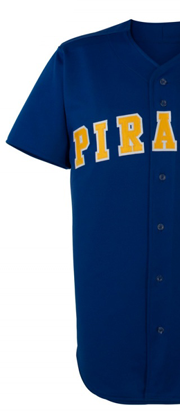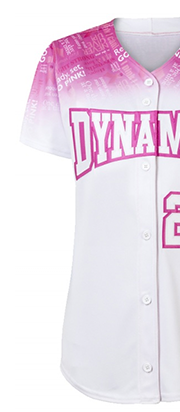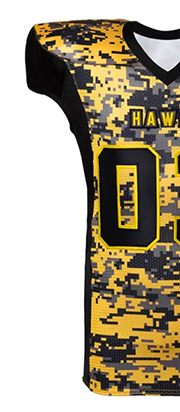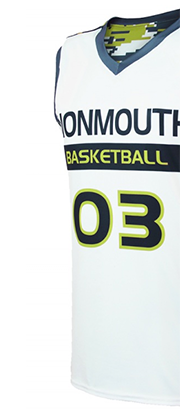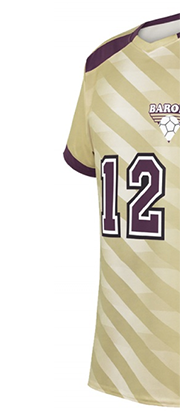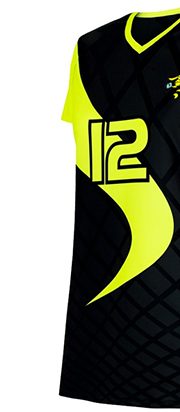There’s nothing better than a helpful tip if you’re a new coach just getting started with your little league baseball team. Remembering to get everyone’s contact info and the team’s custom baseball uniforms in on time probably takes the cake when you first get going, but once the first practice arrives mission #1 is always going to be figuring out how you can better your squad.
For the real “go getter” coach, that means hunting down a bunch of little league baseball drills that are either fun, helpful or both. Some drills can be a waste of time and it’s good to knock them out early so you know not to go back to them later on, but others you can stick in your back pocket to use over and over. We’ve picked up a few little league baseball drills that are always good for honing the basic fundamentals and can continue to help players improve:
Base Running – Down Angle Drill
This drill is all about mastering base running, angles and timing. It also is run in a way that it maximizes time in practice so every player can get an appropriate amount of reps in. You start out with your team split up into three groups – one at first base, one at second and one at third. Have a pitcher (probably a coach) at the mound, tossing a versatile set of balls (strikes, dirt balls, etc) to a catcher and have each base runner take their turn, and depending on what the ball is, they can practice on when/how they should depart the specific base, whether they need to stay put and/or check back before running. This drill obviously is great from just a beginning perspective, as it teaches the fundamentals of base running and how to react to various pitchers and how the ball is hit. As you become more advanced, this can greatly help your team’s offense and put added pressure on opposing defenses, as your squad will gain a mental edge with improved knowledge on what to do with several types of pitches.
Batting Practice – Hitting the Fastball
No matter how advanced a hitter gets, they always can use work on identifying, reacting and actually connecting on fastball pitchers. Usually the younger your team is, the less intense the pitching is in all regards, but the biggest thing separating a good pitcher and a good offense is the speed of the pitcher. Power hitters are few and far between at the lower levels, but there are always some tough arms you’ll run into that can throw it hard and fast, but won’t necessarily work the plate. That puts a bigger emphasis early on to get used to some speed on the ball and as the players grow and improve, they’ll be more and more used to fast pitcher and will be able to focus on other flaws at the plate.
One of the big things people overlook is how you actually hold the bat. Just like with a basketball shot, if a hitter has bat position and stance that works, you really don’t want to mess with it too much. However, especially when starting out, it’s more than okay to incorporate some of the basic fundamentals. For grip, always be sure to not hold the bat too tightly or all the way in the palm of your hands. There is always the fear that without a tight grip the bat could go flying, but holding it more on the finger tips makes it easier to swing more fluidly and puts less pressure on your shoulders. The next issue is the actual stance, as you simply want to roll with the traditional “feet out just past your shoulders”. This doesn’t always have to be precise but it should be comfortable and the hitter should be balanced. That way no matter what the pitch is, you’ll always be completely ready to swing freely.
The other huge aspect when taking on the fastball is establishing contact correctly. Anyone can swing and hope they hit the ball, but aiming underneath the ball usually leads to a flat out miss or a bad pop up that results in an easy out. It’s best to hit near the top of the ball, giving you the best chance to establish contact and actually put the ball in play. The more defined your stance and the more fluid your swing, the better the chance of adding proper placement and distance to the contact.
Pitching Practice – The Bullseye Drill
This is all about accuracy and placement, and the two can work together to help your pitchers work on their stance, release motion and fluidity. That should go without saying, but no matter what they set up and delivery is, this will help improve their game and overall accuracy. The basic concept is to create a “bullseye” or obvious target for the pitcher to go after and increasingly make it smaller and smaller. You can keep track of the success by scoring the pitcher at each level and also test placement by moving the bullseye to different areas. The idea here is not just to get good at putting the ball in one spot, but to really challenge pitcher’s placement and accuracy consistency.
There are countless drills for every facet of little league baseball, but these three are key drills that can definitely help you improve three of the most important aspects of the game. Have your own little league baseball drills to share? Tell us about them in the comments below!

